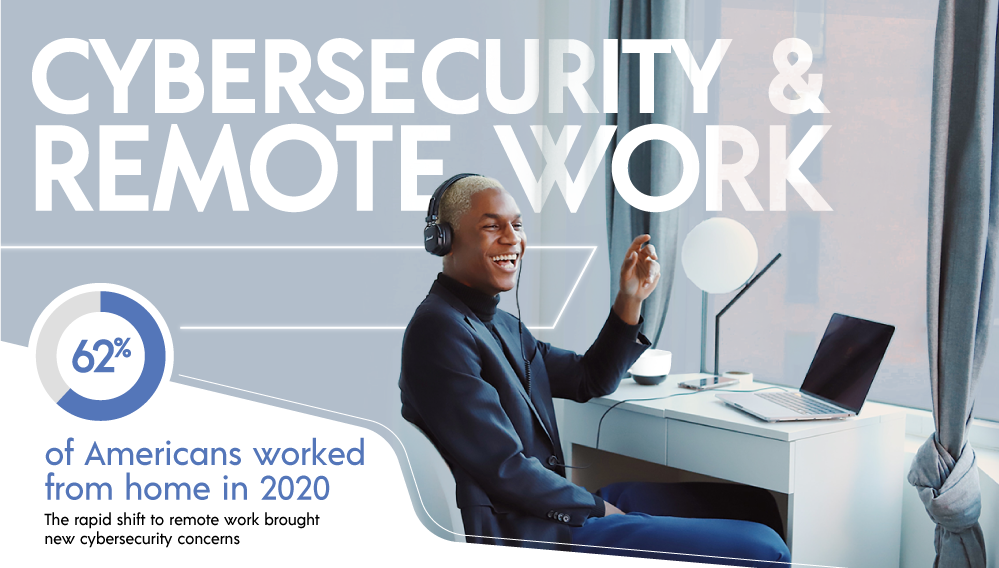Just two years ago, most employees were still working at the office, safely nestled into the warm arms of their company’s network and cyber security measures, run by their in-house IT departments. Fast forward to 2020 and suddenly 62% of Americans are working from home. In comes the use of personal devices, unsecure or glitchy WiFi, remote network connections, and poor, if any, security measures. We’ve been released from the “mothership” (aka company headquarters) and sent to work from our own homes or other remote locations. This certainly has its perks. The vast majority of employees are embracing this new change with enthusiasm, and even employees are reaping the benefits as remote work is more cost effective, among other things. Nevertheless, this new way of operating businesses has presented employees and their companies with some new challenges which require speedy resolutions.
According to the FBI, cyber attacks rose by a breathtaking 300% in early 2020, just when everyone was beginning to work from home. It’s not surprising then, that targeted attacks on remote employees also rose by 5x, and 20% of businesses report a rise in security breaches that could be linked back to remote workers. The various types of cyber attacks also skyrocketed to unprecedented levels as phishing rose by 600%, ransomware by 148%, and malware activity by 128%. With 49% of remote employees working from home for the first time with little training on security measures, the pandemic brought on a sudden wave of security issues.
The top security threats are devices being more exposed at home; the difficulty of managing new devices remotely; IT not being able to support remote workers; and lack of cybersecurity protections on personal networks and personal devices. The top security tips given by companies to their employees are to be wary of suspicious emails, attachments, and pop-ups; to ensure antivirus software is activated; and to keep software patched and up to date. However, only 20% of employees received these or any other kinds of security tips. While 56% of employees are using personal computers and 25% don’t know what security protocols are on their devices, 75% still would be likely to follow security protocols provided by their employers… if any were provided at all.
Sixty percent of employees report having MFAs (multi-factor authentication) implemented by their employees, yet 67% of companies still had security breaches and 63% of data breaches come from hacking weak or re-used passwords. MFA is not cutting it with this new world of remote work and remote access. The weakened security due to remote work, is adding to the ease of hacking through an MFA.
The future of cyber security and the answer to the issues with MFA is to use security protocols that remove passwords altogether and replace them with cryptography and biometrics. Beyond Identity is a security company that does just that and takes cyber security to the next level. Cyber attackers can’t hack a password that isn’t there.
Passwordless security is the answer to the security challenges of a remote access world.



